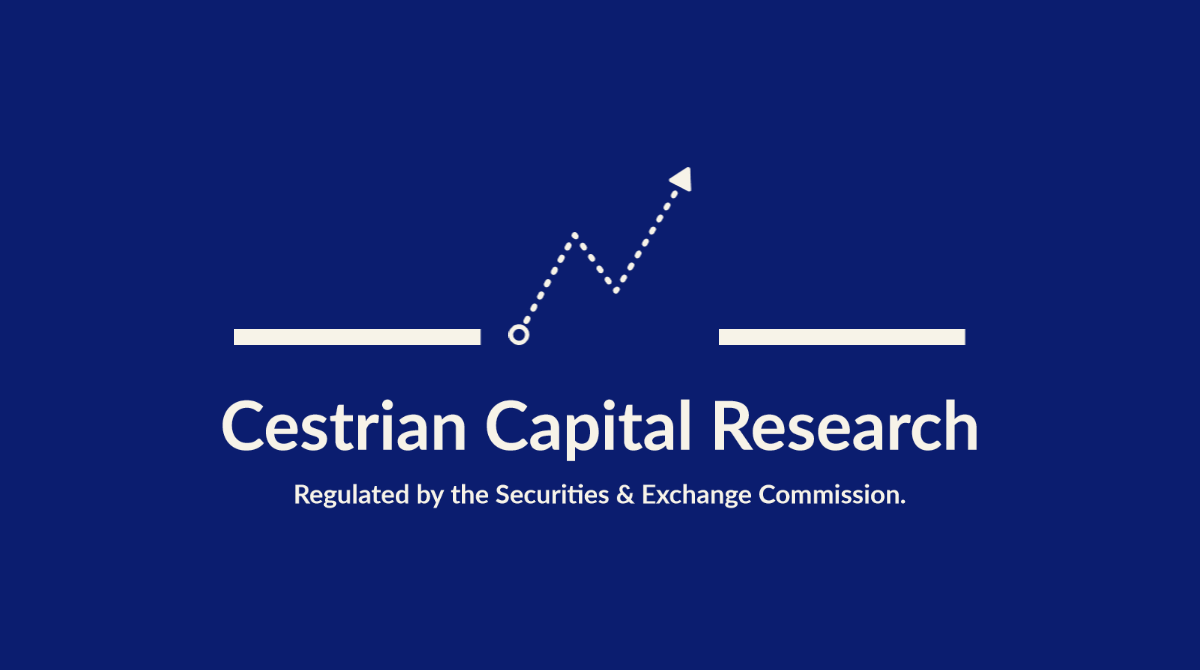Intel Corporation Update
Intel is a key member of our Dowtards stock basket. We revisit the thesis here.
DISCLAIMER: This note is intended for US recipients only and, in particular, is not directed at, nor intended to be relied upon by any UK recipients. Any information or analysis in this note is not an offer to sell or the solicitation of an offer to buy any securities. Nothing in this note is intended to be investment advice and nor should it be relied upon to make investment decisions. Cestrian Capital Research, Inc., its employees, agents or affiliates, including the author of this note, or related persons, may have a position in any stocks, security, or financial instrument referenced in this note. Any opinions, analyses, or probabilities expressed in this note are those of the author as of the note's date of publication and are subject to change without notice. Companies referenced in this note or their employees or affiliates may be customers of Cestrian Capital Research, Inc. Cestrian Capital Research, Inc. values both its independence and transparency and does not believe that this presents a material potential conflict of interest or impacts the content of its research or publications.ds
War By Any Other Name
Electronics are fundamental to every industry and every consumer activity today. Electronics of all kinds, from quantum computers to toasters, require semiconductor devices to function. Semiconductor devices - specifically integrated circuits, which in advanced cases comprise many billions of individual transistors. As you might expect, designing and manufacturing such complex, intricate devices is neither easy nor cheap, and as a result, the semiconductor industry tends towards oligopoly. This is true in design and manufacturing of the devices themselves, it is true in the tools used in manufacturing, and it is true for the software used to design devices.
One of the more concentrated segments in semiconductor is CPU and GPU. In the battle for market share in the datacenter, in enterprise workstations and in consumer devices, the major players are Intel Corporation ($INTC), Nvidia ($NVDA) and Advanced Micro Devices ($AMD). Intel has a unique history in this triumvirate, being the heir to the original Silicon Valley companies of Shockley Semiconductor Laboratories and Fairchild Semiconductor. You can read a potted history of Intel's founding, here. Intel is as old as the hills amongst technology companies, and its more-or-less monopoly position in the 1990s led directly to its gradual decline. The company missed the move to mobile (ceding this to ARM, which is about to go public as an independent company once more), missed the opportunity to get serious about comms (ceding this to Broadcom, amongst many others), missed the opportunity to win in wireless (delivering trillions of dollars of value to investors in wireless comm semi startups along the way), and finally missed the move to GPU, allowing Nvidia to grow to its current size and AMD to play second fiddle by dint of an acquisition of an also-ran in GPU.
So far, so bad. But the final humiliation endured by Intel was that its manufacturing excellence fell by the wayside. Semiconductor manufacturing is exceptionally difficult and demanding, not to mention fiendishly expensive, and it only gets more so with each new design generation. More transistors on smaller devices using less power and generating less heat, rinse and repeat. Intel's 'Integrated Design & Manufacturing' model and manufacturing scale made it more or a less a duopolist in fabrication, alongside Taiwan Semiconductor Manufacturing Corp ($TSM), a contract manufacturer based in Taiwan and established as a joint venture between a local founder and Philips of the Netherlands. Intel was late to the '10nm' feature size transition; TSM began 10nm scale production in 2016, Intel in 2018, and then with problems. Intel has yet to really recapture its manufacturing elan since that time.
This is a sorry tale of a once-great American innovator, a global champion, tripping over its own shoelaces and seeing its stock plummet to only a little above the 2009 financial crisis lows.
Why then do we have Intel as a member of our 'Dowtards' stock basket - a basket of names we believe have lagged the market recovery in 2023 but which we think capital is rotating into, the better to deliver share price gains into 2024?
We explain all for our paying members below. If you've yet to become a paying member of Cestrian Inner Circle, you can do so right from this link. Any difficulties, email us at minerva@cestriancapital.com and we can get you set up.
